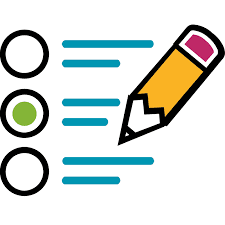
Reliability/Validity/Rubric Development
Quiz by Aida Jeaneth Chávez Ayala
Feel free to use or edit a copy
includes Teacher and Student dashboards
Measure skillsfrom any curriculum
Measure skills
from any curriculum
Tag the questions with any skills you have. Your dashboard will track each student's mastery of each skill.
With a free account, teachers can
- edit the questions
- save a copy for later
- start a class game
- automatically assign follow-up activities based on students’ scores
- assign as homework
- share a link with colleagues
- print as a bubble sheet
10 questions
Show answers
- Q1
Alternative assessments are used to determine what students can and cannot do, in contrast to what they do or do not know.
False
True
30s - Q2What is the term used to describe the consistency and accuracy of assessment results?ValidityReliabilityFairnessBias30s
- Q3Which of the following is NOT a source of measurement error in assessment?Systematic errorRandom errorContent validityInter-rater reliability30s
- Q4Which of the following is an example of inter-rater reliability?A measurement tool consistently providing the same result for repeated measurementsA student's score on a test remaining consistent over timeA test accurately measuring the construct it is intended to measureTwo different teachers consistently giving the same grade to a student's essay30s
- Q5When evaluating the reliability of an assessment, which of the following is true?A high reliability coefficient indicates greater consistency in scoresReliability coefficient measures validity, not consistencyA low reliability coefficient indicates greater consistency in scoresReliability does not impact the consistency of scores30s
- Q6What is a rubric?A linguistic rule in a foreign language.A type of language learning activity.A tool used to assess performance based on predetermined criteria.A language proficiency test for learners.30s
- Q7What is the purpose of a rubric in assessing language learning?To make language learning more enjoyable.To create competition among language learners.To provide clear criteria for evaluating language proficiency.To determine learners' native language.To give learners a structure to follow in language acquisition.30s
- Q8What is the difference between analytic and holistic rubrics in language learning assessments?Analytic rubrics assess separate language skills, while holistic rubrics provide an overall assessment.Analytic rubrics are used for written assessments, while holistic rubrics are used for oral assessments.Analytic rubrics provide detailed feedback, while holistic rubrics only give a general score.Analytic rubrics are subjective, while holistic rubrics are objective.30s
- Q9What is the purpose of feedback in language learning?To assess learners' language proficiency objectively.To establish clear expectations for learners.To provide guidance and help learners improve their language skills.To compare learners' performance with their peers.30s
- Q10What is the purpose of formative assessment in language learning?To determine students' final grades at the end of the course.To assess students' language proficiency objectively.To compare students' performance with their peers.To monitor students' progress and provide feedback during the learning process.30s